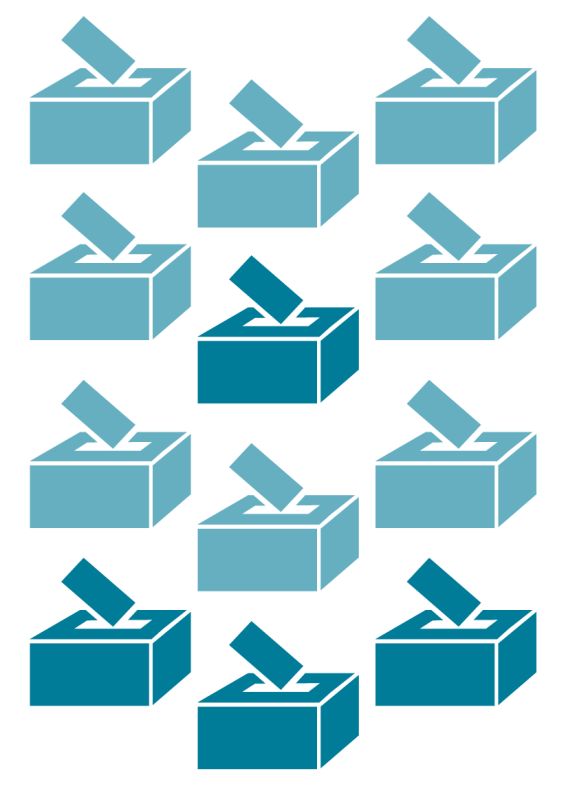Why can't we vote on policies instead of parties during an election?
Ballot box graphic

Parliamentary Education Office (peo.gov.au)
Description
This graphic is a representation of a ballot papers being placed into a ballot boxes.
This work is licensed under a Creative Commons Attribution-NonCommercial-NoDerivs 3.0 Unported License.
You are free to share – to copy, distribute and transmit the work.
Attribution – you must attribute the work in the manner specified by the author or licensor (but not in any way that suggests that they endorse you or your use of the work).
Non-commercial – you may not use this work for commercial purposes.
No derivative works – you may not alter, transform, or build upon this work.
Waiver – any of the above conditions can be waived if you get permission from the copyright holder.
We don’t actually vote for policies or parties at an election – we vote for people. Australia is a representative democracy, which means that at federal elections, voters choose people to represent them in the Australian Parliament.
To choose the best person to represent them, voters can learn about all the candidates and their plan of action on various issues – these are called their policies. Voters might visit candidates’ websites, contact candidates and compare different candidates’ policies. Many candidates are members of political parties, but ultimately, only people can serve as members of the Australian Parliament.
There have been times when Parliament has surveyed or polled Australians about what they thought about a specific policy. Members of parliament can use the results of a survey or poll to inform their decisions.
For example, in 2017, the Australian Government held a national survey to gauge public opinion on changing the definition of marriage to include persons of the same sex. The majority of participants in the survey agreed same-sex couples should be able to marry. The Parliament acted on the wishes of the Australian people by changing the law to allow same-sex couples to marry in Australia.
